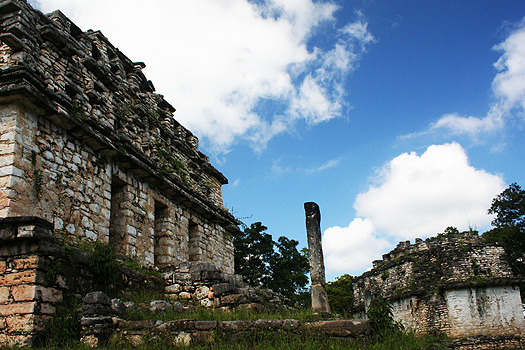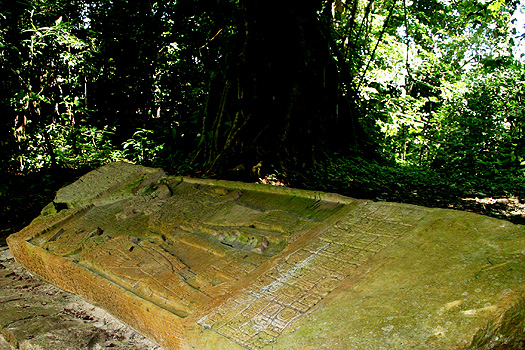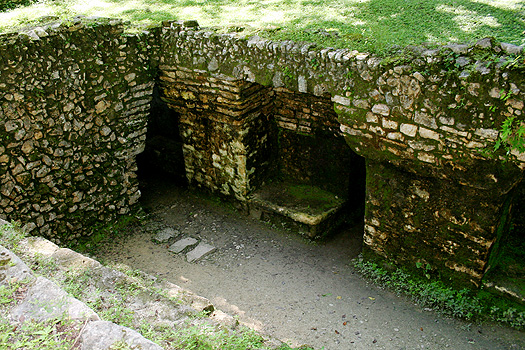2006 AD: The Maya ruins of Yaxchilán, México
On a high natural terrace strategically situated in a tight horseshoe bend in the river Usumacinta and deep within the Lacandonian Rainforest is where around 350 AD construction began of the ancient city state of Yaxchilán - meaning Green Stones in Maya. Whether the Maya spanned the river by means of a bridge or simply build a gate on either site in practice this enabled them to control passing trade and levy a toll tax. The city reached its zenith of power at the end of the 7th century under the rule of King Itzamnah B’alam II (a.k.a. Shield Jaguar II; from 681 until 742) and his successful campaign for regional dominance was to be continued by his son Yaxuun B’alam IV ('Bird Jaguar IV'; 752-768) and later by Itzamnah B’alam III ('Shield Jaguar III'; 772-800). Through warfare and political allegiances Yaxchilán's sphere of influence reached as far as Tikal and Palenque.
Finally deserted before the turn of the tenth century, which coincides with the collapse of the Maya Classic Period throughout the Lowlands, the city was left for invasion by the surrounding wilderness. For the next thousand years the city's chronicles recorded on limestone stelae, lintels and walls laid preserved under thick jungle vegetation.
Please browse to http://www.skylla.co.uk
if the map does not appear in a few seconds.
Two of the first non-Mayan explorers reached Yaxchilán in 1882: Alfred Maudsley and Désiré de Charnay.
Published on 10.12.2006 by Sjaak van der Sar – Leave critique or other comments










